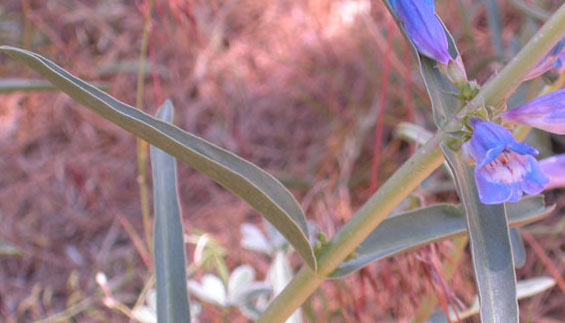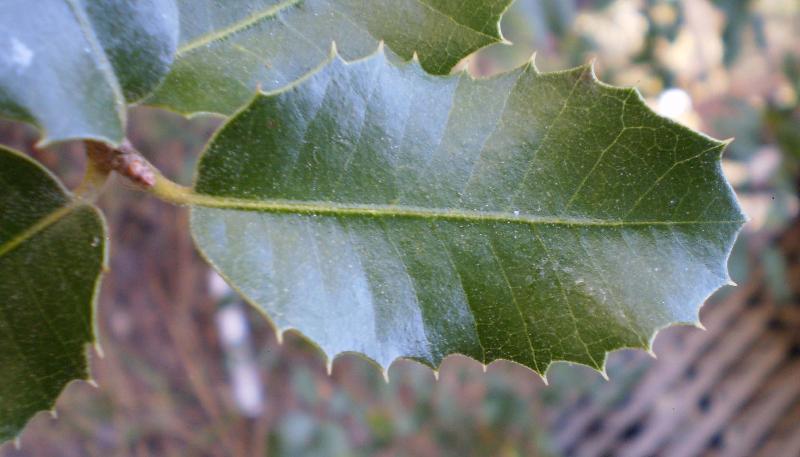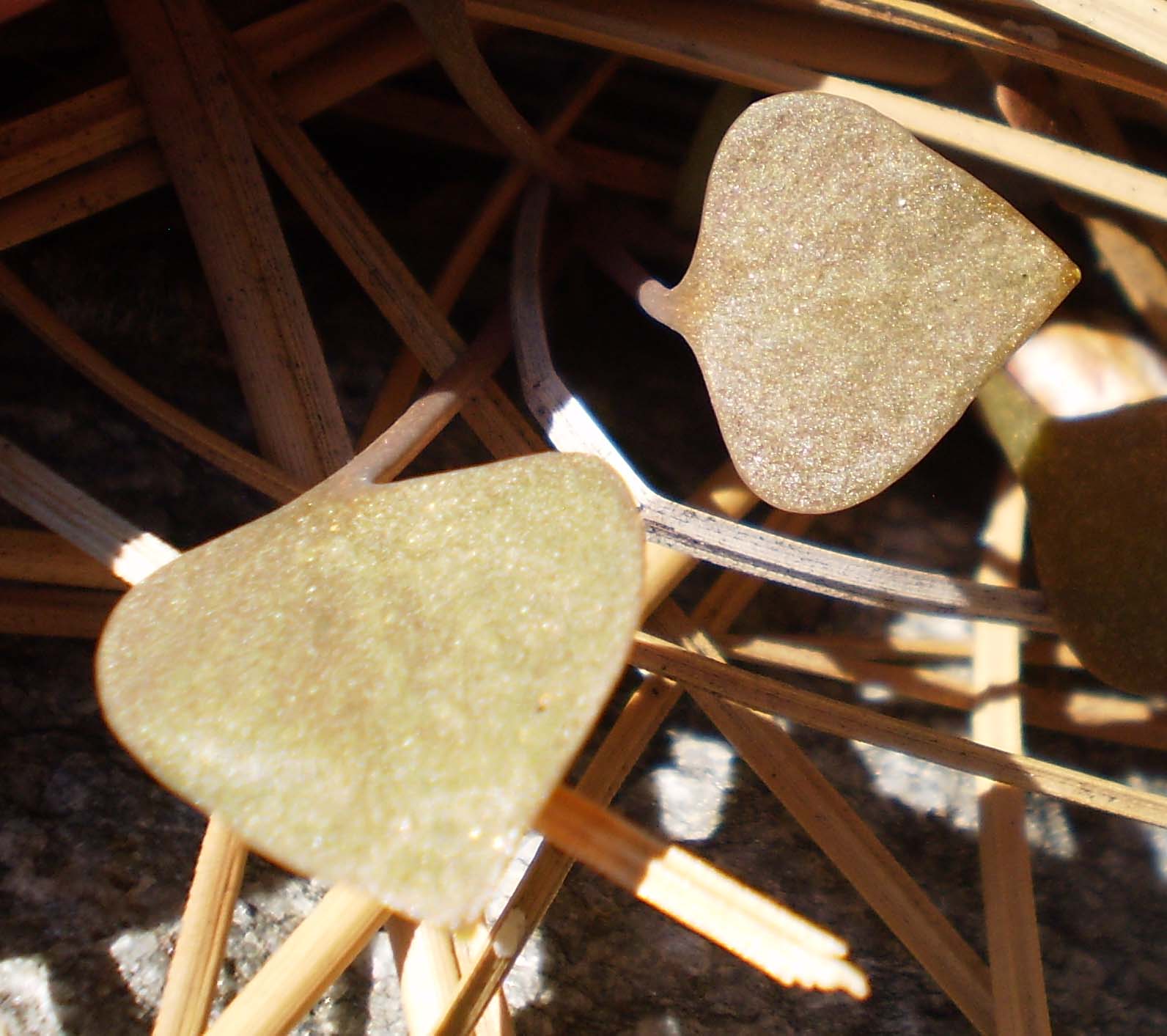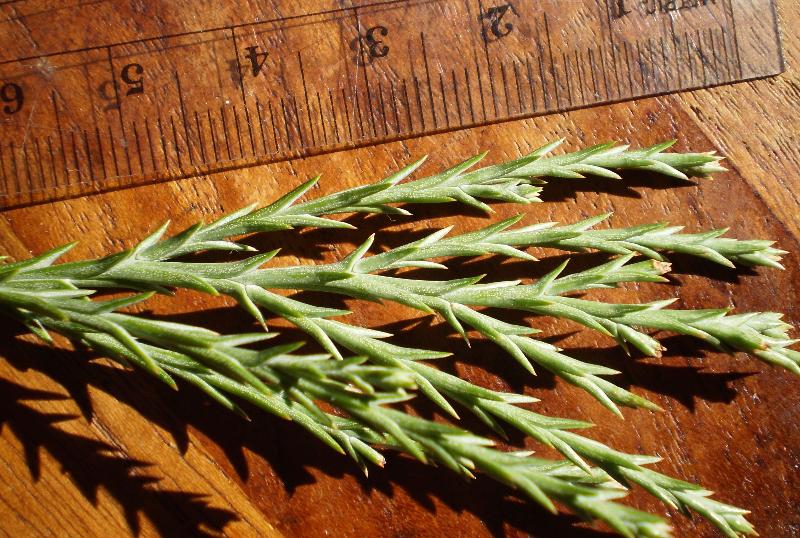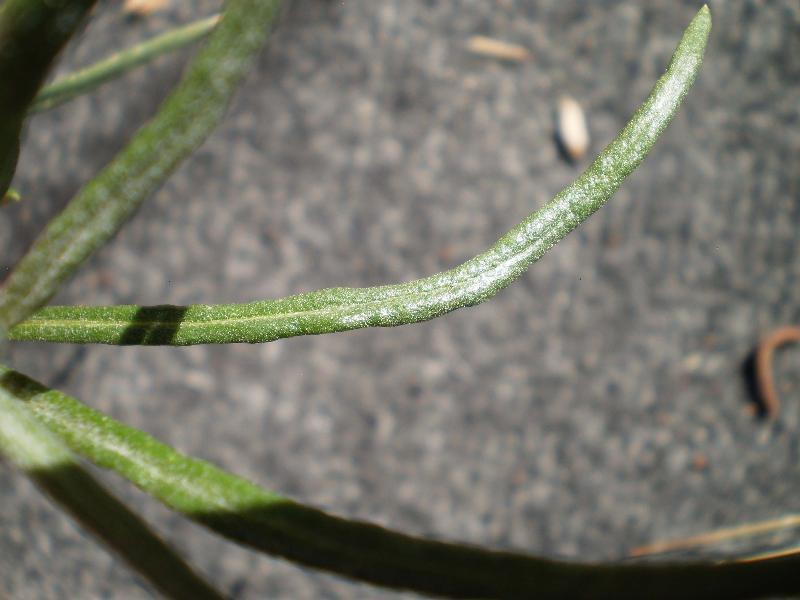Shapes
Different terms are used to describe the tip of the leaf, the base of the leaf, and the overall shape of the leaf.
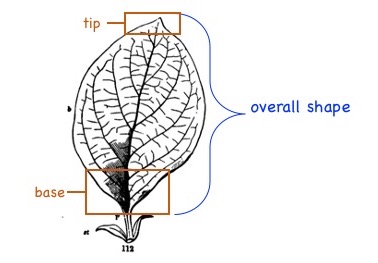
Leaf tip
The tip of a leaf may take many forms. A leaf may end in an awn (a long needle-like structure); it may end in a tendril; it may be truncate (flat, straight across), etc. Commonly, however, leaf tips are:
- obtuse (with a point that is broader than 90 degrees),
- acute (with a point that is narrower than 90 degrees), or
- acuminate (coming to a sharp point from a concave region of the leaf outline) etc.

Leaf base
The base of the leaf blade can have various shapes. The figure below shows several shapes. The most common descriptions you will encounter are:
- Rounded (self-explanatory)
- Cordate (="heart-shaped")
- Truncate (="cut off" - meaning straight across)
- Oblique (="at an angle"; these leaves are usually slightly cordate on one side, but not the other)
- Hastate (with long lobes at the base that flare out to the sides)
- Sagittate (like hastate, but the lobes point straight back along the petiole)
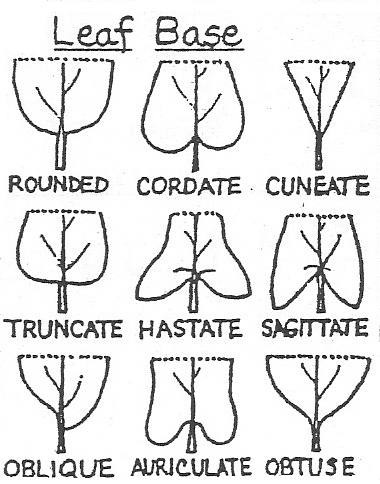
Leaf bases may also be clasping, with basal lobes hugging or wrapping around the stem.
Some leaf bases may be decurrent, with an extension of the blade running down the stem.
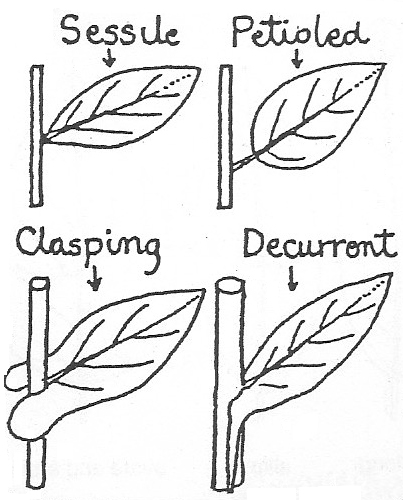
Leaf shape (overall)
Very small leaves are often described as scale-like or awl-like. Scale-like leaves are small and blunt. Awl-like leaves tend to be a bit longer, narrower, and sharper.

Larger leaves have a variety of shapes. The image below shows five shapes:
- Needles are very narrow; sometime as thick as they are wide.
- Linear leaves are very narrow, but are definitely much thinner than they are wide.
- Lanceolate leaves are relatively narrow and spear-shaped. They are widest near the base and taper toward the tip.
- Ovate leaves are shaped like lanceolate leaves, but are much broader ("egg-shaped")
- Elliptic leaves are like lanceolate and ovate leaves. However, whereas the widest part of the leaf in lanceolate and ovate leaves is closer to the base or proximal end, the widest part of an elliptic leaf is in the middle.
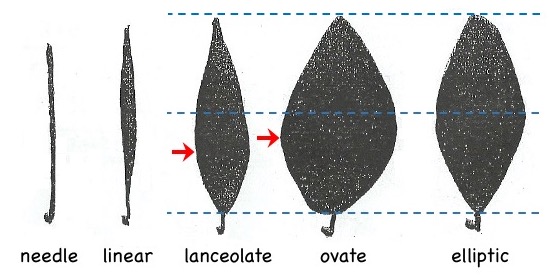
In some leaves, the widest part of the leaf is distal to the mid-point of the blade. In these cases, we just add "ob-" to the shape name. The figure below shows a lanceolate leaf and an oblanceolate leaf; an ovate leaf and an obovate leaf.

Some leaves have relatively parallel sides (no wide point). These are referred to as oblong.
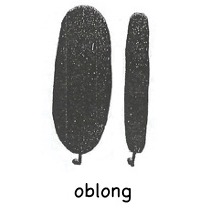
- Some broad leaves have shapes that resemble triangles. They are called deltate or deltoid leaves.
- Others have shape that resemble kidneys. They are called reniform leaves.
An ovate leaf with a cordate base looks somewhat similar, but deltate leaves have a more truncate base, and reniform leaves...look like a kidney, rather than a heart.

Check your understanding:
